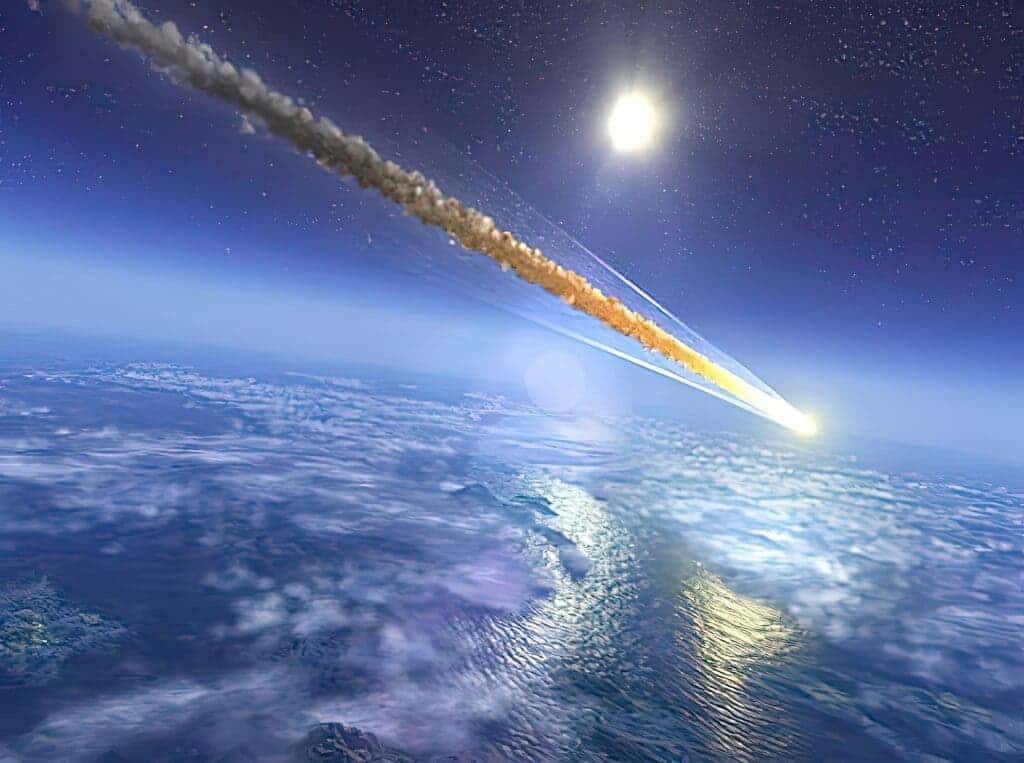
RNA and DNA, the blueprints of life, are based on just five basic building blocks, known as nucleotides. This narrow selection of nucleobases may be the result of multiple grueling stages of selection pressure billions of years ago during the chaotic environment of early Earth, most likely in hydrothermal vents in the deep ocean and warm little ponds. Another possibility is that these nucleotides, or at least some of them, were seeded from outer space, and carried to Earth by meteorites where they would eventually synthesize into RNA polymers.
However, not all of the essential pyrimidine nucleobases, which include cytosine, uracil, and thymine, have been found in meteorite samples. This has caused quite some frustration since lab experiments simulating interstellar conditions found evidence that these nucleobases could be formed. Previously, only purine nucleobases (guanine and adenine) and uracil had been identified — until now.
In a new study, researchers at Hokkaido University in Japan report finding the missing pyrimidines in three carbon-rich meteorites using state-of-the-art analytical techniques, which are sensitive down to parts per trillion (ppt).
“Various classes of organic molecules such as amino acids, hydrocarbons, and carboxylic acids have been identified so far [in meteorites]. For example, nearly 100 types have been identified for amino acids. On the other hand, detection of nucleobases was not so common in meteorites, just eight molecules (seven purines and one pyrimidine) having been identified. On the other hand, in laboratory experiments under conditions in extraterrestrial environments such as interstellar medium and solar nebulae, it has been reported that nucleobases can be produced under those conditions. So, I wondered why nucleobases are not [readily found] in meteorites?” Dr. Yasuhiro Oba, the lead author of the new study, told ZME Science.
The primordial molecules of life
Scientists detected the first nucleobases, including adenine and guanine, inside meteorites in the 1960s. But after some promising discoveries, progress was cut short. It seemed like despite their best efforts, scientists couldn’t find all the nitrogen bases belonging to both classes (pyrimidines and purines).
But this changed recently thanks to advances in analytical techniques that have allowed scientists to detect molecules present in minute amounts, in concentrations several orders of magnitude lower than previously detected.
“When I analyzed the sample using HPLC/ESI/HRMS for the first time, I was confused, wondering if I just analyzed a mixture of standard chemical reagents since a number of peaks were observed on the screen! I soon found that this was the real result of the analysis of meteorite nucleobases since the number of peaks was much larger than [it would be for just] the chemical reagents which I prepared for the analysis of meteoritic nucleobases. Thus, I realized that nucleobases also show wide diversities in meteorites as is the case for other compounds such as amino acids and hydrocarbons,” Oba said.
Billions of years ago, during the so-called Hadean Earth, the atmosphere was very different from what we breathe today. At that time, it was likely a reducing atmosphere of carbon dioxide, methane, ammonia, and other gases which would be toxic to most life on our planet today. During this time, the inflow of meteorites was much greater than today. As they pounded our planet, these meteorites may have delivered nitrogen pairs that are essential to the emergence of genetic properties and the first RNA-based lifeforms.
Since the compounds they detected were found at concentrations similar to those predicted by lab experiments, the Japanese researchers conclude that these primordial nucleobases may have been partially created by photochemical reactions in the interstellar media. The molecules were then incorporated by asteroids, which piggy-backed them across the solar system eventually reaching Earth as meteorites.
But it is still much too early to paint a definite picture of how life on Earth first began — we’re getting there though. Almost eight years ago, the Japan Space Agency launched the spacecraft Hayabusa2 on a technical marvel of a mission to rendezvous with an asteroid, drill its surface, and return to Earth with a sample. This daring mission was a complete success, with a sample return capsule landing in Australia in late 2020. Its payload of pristine space rock will help scientists understand the earliest days of our solar system, shed light on the mysterious origins of meteorites, and may even provide clues about the emergence of life on Earth.
“Since our team belongs to the Hayabusa2 and OSIRIS-REx, sample-return missions from asteroids, our next target will be the detection of nucleobases and their related molecules in such asteroid-return samples,” Oba said.
The findings appeared in the journal Nature Communications.


